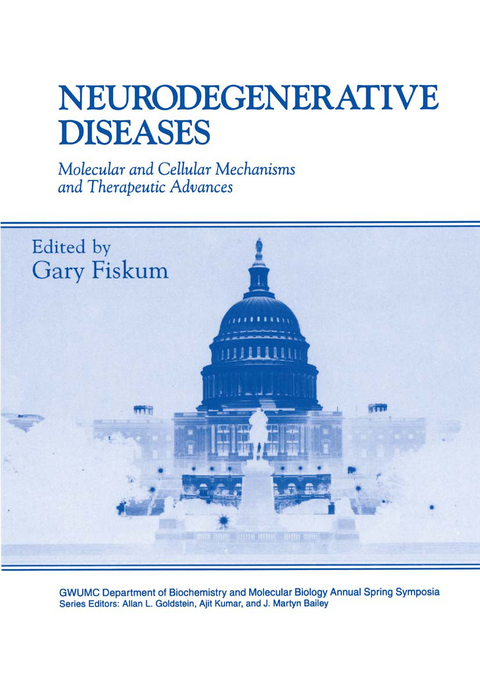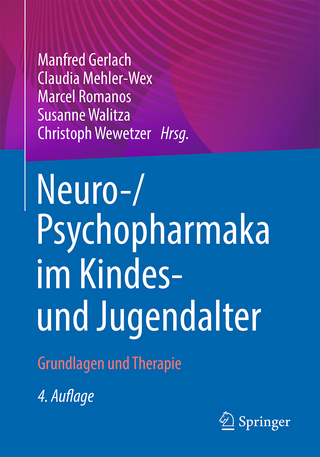
Neurodegenerative Diseases
Springer-Verlag New York Inc.
978-1-4899-0211-5 (ISBN)
This book presents much of the exciting new information on mechanisms of neurodegenerative disorders that was presented at the XVth International Spring Symposium on Health Sciences at George Washington University in Washington, D.C. The organization of the symposium as weIl as the chapters within this book were based upon fundamental molecular and cellular mechanisms of neurodegeneration rather than upon different clinically defined disorders, in order to emphasize the commonality of cause rather than effect. The first part of the book is devoted to the relationships between selective vulnerability of different neuronal cell types to injury and their functional characteristics related to the transport, binding, and responses for excitatory amino acids, e.g., glutamate, as weIl as other neurotransmitters involved in toxicity. These relationships are studied in the context of neurodegeneration associated with several disorders including Parkinson's disease, amyotrophic lateral sclerosis (ALS), cerebral ischemia, and AIDS dementia. Part 11 emphasizes the role of amyloid proteins in neurodegeneration but also covers other molecular and genetic risk factors, e.g., expression of different apo lipoprotein isoforms and the involvement of abnormal superoxide dismutase in neuropathology.
These topics are applied primarily to the aging brain, Alzheimer's disease, and ALS.
Excitotoxicity and Selective Neuronal Vulnerability: Intracellular Signaling in Glutamate Excitotoxicity; I.J. Reynolds, et al. Modulation of Vesicular Glutamate Release during Anoxia; N. Hershkowitz, A.N. Katchman. A Model for the Expression of Different Glutamate Transporter Proteins from a RatAstrocytetype Glutamate Transporter Gene; R.S. Roginski. Glutamate Transporters: Molecular Mechanisms of Functional Alteration and Role in the Development of Excitotoxic Neuronal Injury; D. Trotti, et al. Neurodegenerative Disease and Oxidative Stress: Insights from an Animal Model of Parkinsonism; T.G. Hastings, M.J. Zigmond. Molecular and Genetic Risk Factors: In Vivo Biology of APP and Its Homologues; S.S. Sisodia, et al.. Lymphocyte Amyloid Precursor Protein mRNA Isoforms in Normal Aging and Alzheimer's Disease; R.P. Ebstein, et al. Differential Regulation of APP Secretion by Apolipoprotein E3 and E4; B. Wolozin, et al. Apolipoprotein EUptake Is Increased by Betaamylid Peptides and Reduced by Blockade of the LDL Receptor; U. Beffert, et al. Mutations of Human Cu, Zn Superoxide Dismutase Expressed in Transgenic Mice Cause Motor Neuron Disease; M.E. Gurney, et al. Cellular Metabolism: Functional Activation of Energy Metabolism in Nervous Tissue: Where and Why; L. Sokoloff, S. Takahashi. Bioenergetics in Oxidative Damage in Neurodegenerative Diseases; M.F. Beal. Is There a Relationship between Conditions Associated with Chronic Hypoxia, the Mitochondria, and Neurodegenerative Diseases such as Alzheimer's Disease? C.R. Merril, et al. Thiamine Deficiency as Model of Selective Neurodegeneration with Chronic Oxidative Deficits; N.Y. Calingasan, et al. Free Radicals and Oxidative Stress: The Protective Action of Nitronebased FreeRadical Traps in Neurodegenerative Diseases; R.A. Floyd. Nitric Oxide Actions in the Nervous System; V.L. Dawson, T.M. Dawson. An Inflammatory Role for Nitric Oxide during Experimental Meningitis in the Rat; K.M.K. Boje. Oxidative Stress Plays a Role in the Pathogenesis of Familial Sporadic Amyotrophic Lateral Sclerosis; C. Bergeron, et al. Calcium Transportand Regulatory Proteins: Cysteine String Proteins: PresynapticFunction and Dysfunction; C.B. Gundersen, et al. AIDS Dementia as a Form of Excitotoxicity: Potential Therapy with NMDA Openchannel Blockers and Redox Congeners of Nitric Oxide; S.A. Lipton. Growth Regulation and Apoptosis: Detection of Single and Double Strand DNA Breaks during Excitotoxic or Apoptotic Neuronal-Cell Death; M. Didier, et al. Signaling for Survival: Potential Applications of Signaltransduction Therapies for Suppression of Apoptosis in the Nervous System; A.M. Tolkovsky. Ciliary Neurotrophic Factor (CNTF): Possible Implications in the Pathogenesis of Amyotrophic Lateral Sclerosis; R.W. Orrell, et al. Neuronal Differentiation of PC12 Cells in the Absence of Extracellular Matrix Adhesion Induces Apoptosis; H.W. Harris. 29 additional articles. Index.
| Reihe/Serie | Gwumc Department of Biochemistry and Molecular Biology Annual Spring Symposia |
|---|---|
| Zusatzinfo | XII, 482 p. |
| Verlagsort | New York |
| Sprache | englisch |
| Maße | 178 x 254 mm |
| Themenwelt | Medizin / Pharmazie ► Medizinische Fachgebiete ► Neurologie |
| Naturwissenschaften ► Biologie ► Biochemie | |
| Naturwissenschaften ► Biologie ► Humanbiologie | |
| Naturwissenschaften ► Biologie ► Zoologie | |
| ISBN-10 | 1-4899-0211-2 / 1489902112 |
| ISBN-13 | 978-1-4899-0211-5 / 9781489902115 |
| Zustand | Neuware |
| Haben Sie eine Frage zum Produkt? |
aus dem Bereich


